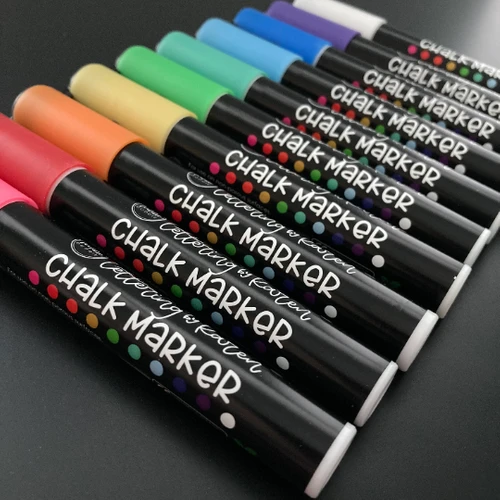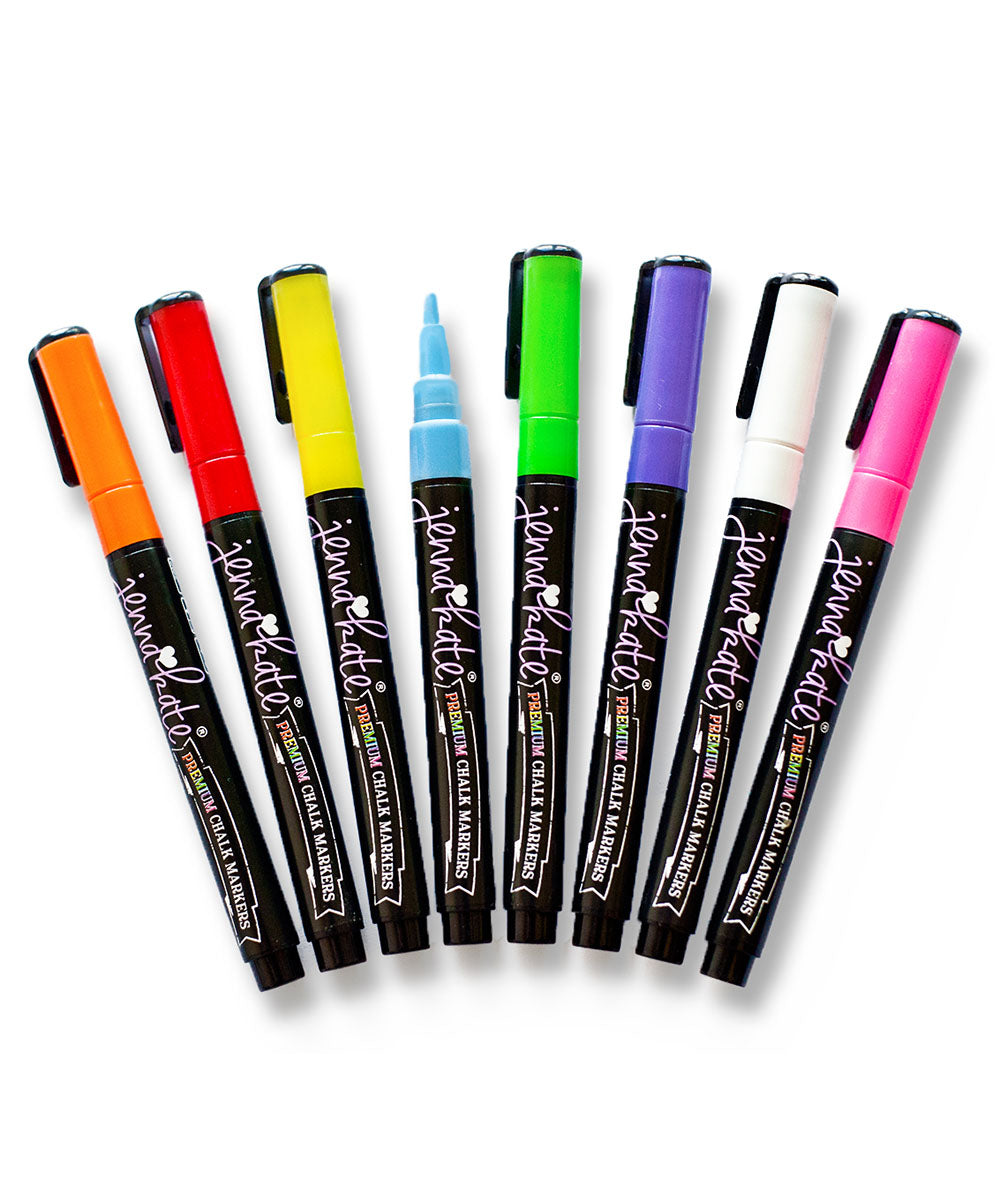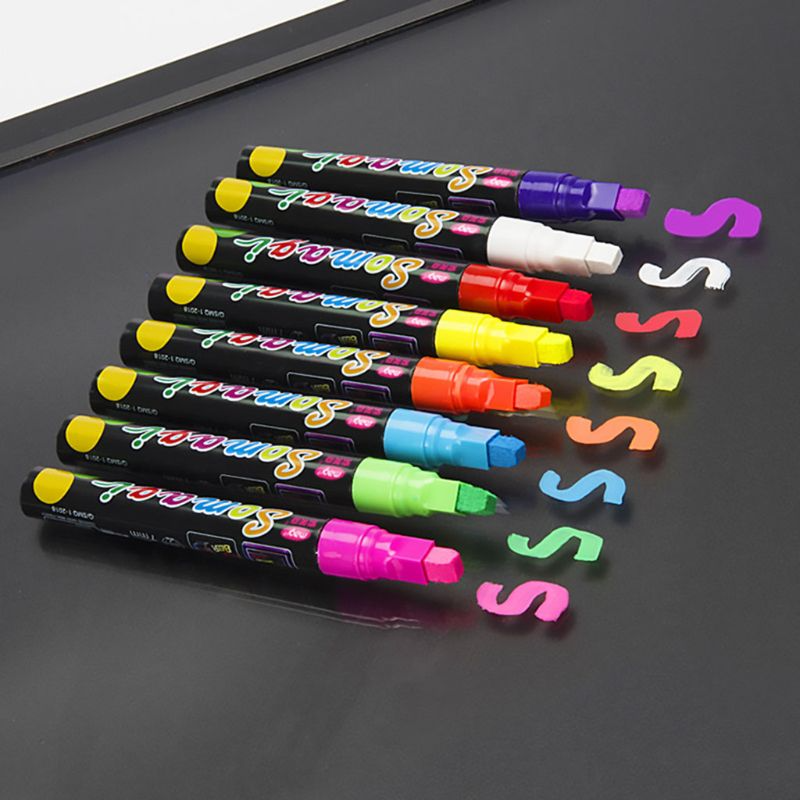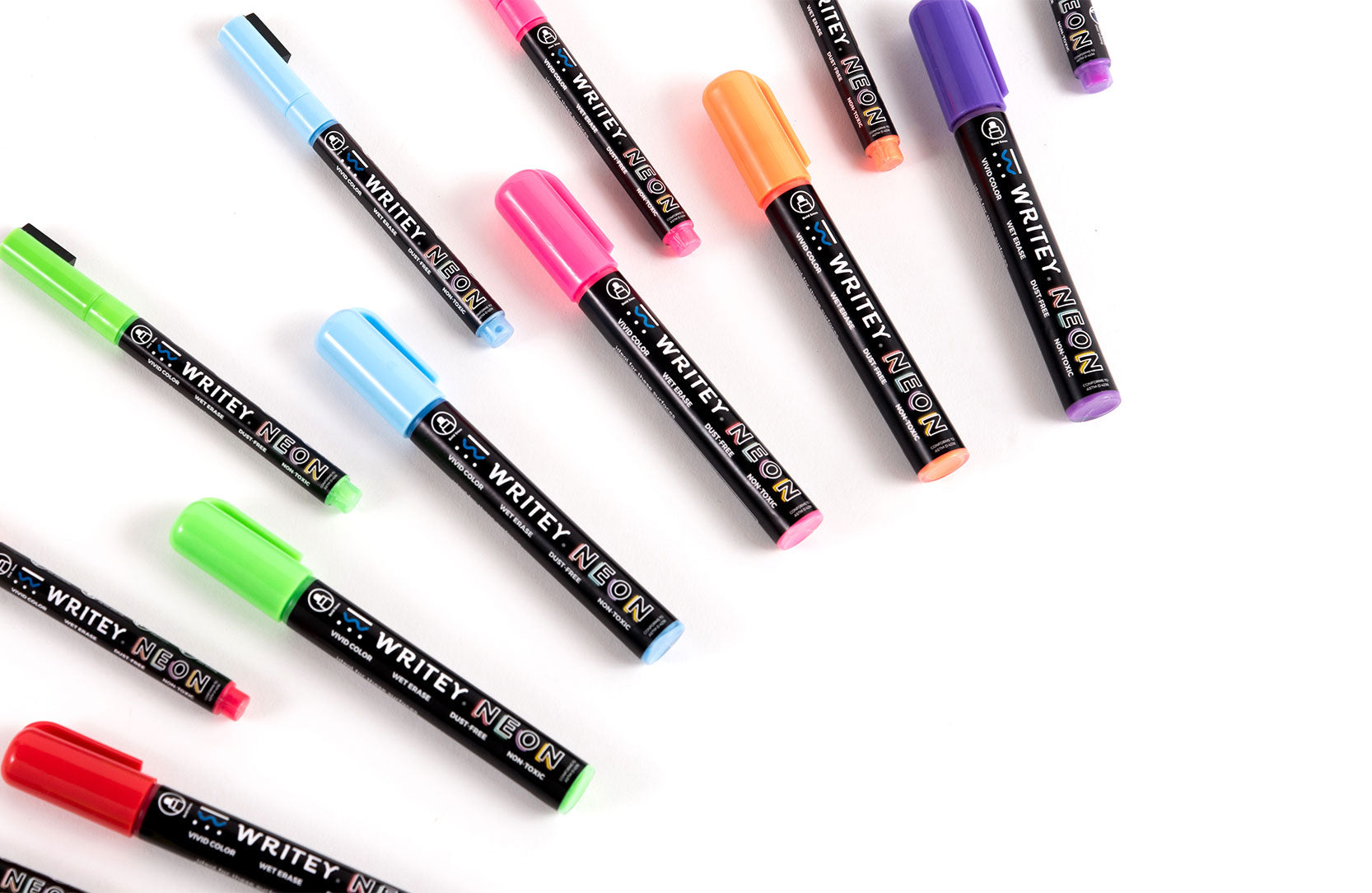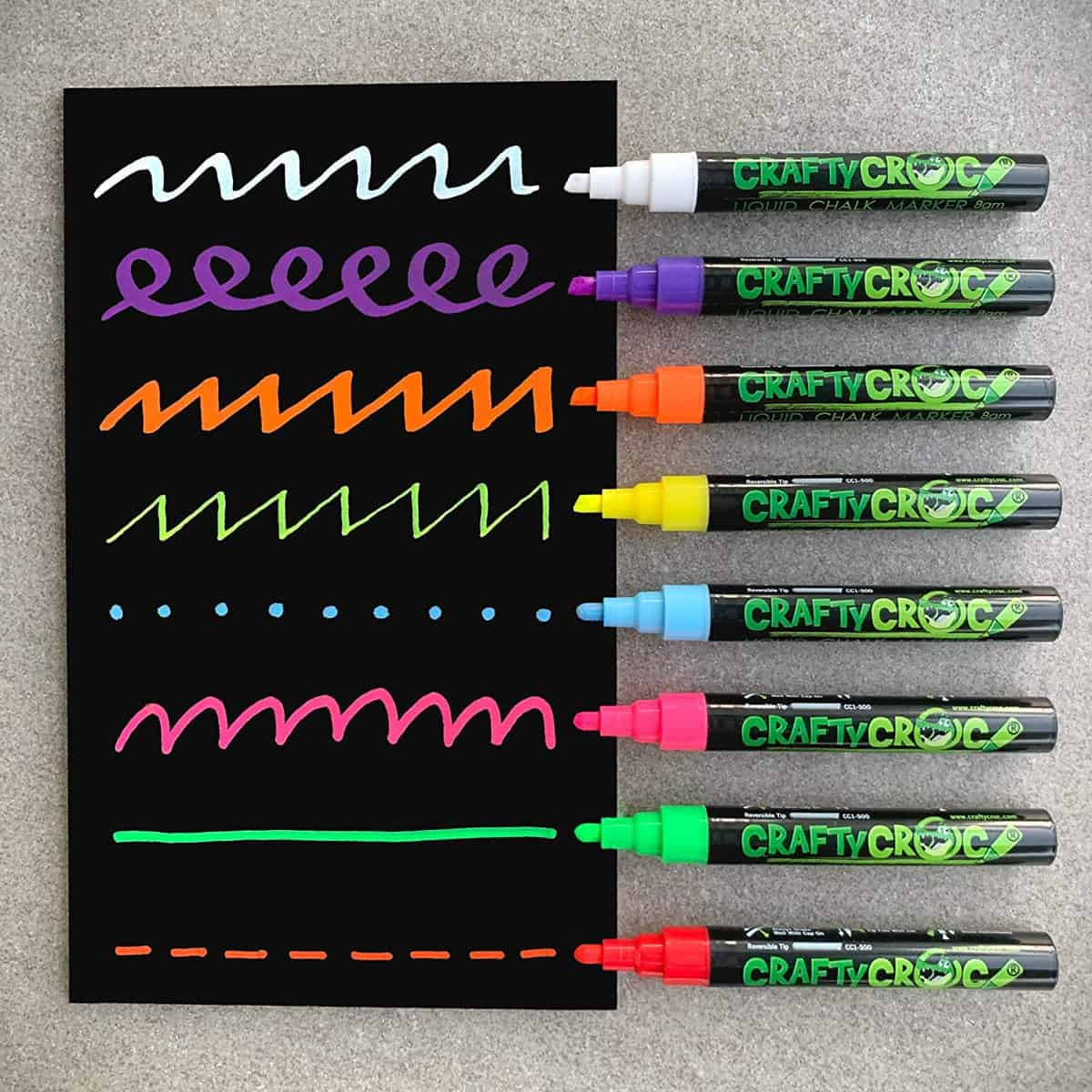Introduction to Chalk Pens
Chalk pens, also known as chalk markers, have become a popular tool in classrooms, homes, and businesses. Unlike traditional chalk, chalk pens provide a cleaner, more vibrant writing experience. They feature a liquid ink that dries to a chalky finish, which can be easily wiped off non-porous surfaces. This article explores the various facets of chalk pens, including their benefits, applications, how to use them, and their environmental impact.
Benefits of Using Chalk Pens
Clean and Dust-Free
One of the primary benefits of chalk pens is that they are clean and dust-free. Traditional chalk can create a lot of dust, which can be messy and irritating to both users and those around them. This dust can also pose health concerns, particularly for individuals with respiratory issues. In contrast, chalk pens do not produce dust. The liquid ink is contained within the pen and does not become airborne, providing a cleaner alternative.
Vibrant Colors
Chalk pens offer vibrant, rich colors that traditional chalk cannot match. The ink in chalk pens is often more pigmented, resulting in brighter and more visible writing. This makes chalk pens ideal for creating eye-catching signs, menus, and art. The availability of a wide range of colors, from basic primary colors to metallics and neons, allows for more creativity and flexibility in design.
Precise and Controlled Writing
Another advantage of chalk pens is the precision and control they offer. Traditional chalk pieces often wear down unevenly and can be difficult to handle, especially for detailed work. Chalk pens, however, come with a variety of tip sizes, from fine points for detailed writing to broad tips for bold lines. This allows users to achieve a level of precision that is difficult with traditional chalk.
Easy to Use and Erase
Chalk pens are easy to use. They operate like regular markers, where you simply shake them, press the tip to prime it, and start writing. This simplicity makes them accessible to users of all ages and skill levels. Additionally, mistakes can be easily erased from non-porous surfaces like chalkboards, glass, and metal. This is as simple as wiping with a damp cloth, making them perfect for situations where information needs to be regularly updated or corrected.
Applications of Chalk Pens
Educational Settings
Chalk pens have found a significant place in educational settings. Teachers use them on whiteboards, blackboards, and even windows to create engaging and interactive lessons. The vibrant colors and ease of use make them a favorite tool for educators. Additionally, the dust-free nature of chalk pens is beneficial in classrooms, reducing allergies and keeping the environment clean.
Chalk pens are also helpful for labeling and organizing. Teachers can label storage bins, shelves, and classroom materials easily, making it simpler for students to find what they need. The ability to erase and rewrite as needed ensures that labels can be updated without creating waste.
Business and Retail
In business and retail environments, chalk pens are valuable for creating attractive displays and signs. Restaurants use them to write daily specials on chalkboards or glass windows. Retail stores create vibrant window displays or sales signs. The ease of use and the ability to create detailed, eye-catching designs make chalk pens a staple in these settings.
For small businesses, chalk pens offer a cost-effective way to frequently update information. Instead of printing new signs, businesses can simply erase and rewrite details as needed. This flexibility also allows for creative promotions and seasonal updates without extra expense.
Home and Personal Use
Chalk pens are also popular for home use. They are perfect for organizing and labeling in various parts of the home, such as the kitchen, pantry, and garage. Homeowners can label jars, containers, and shelves with ease, and the ability to erase and update labels adds to their utility.
Additionally, chalk pens are excellent for home decor and crafting. They can be used to create custom signs, decorative glassware, and seasonal decorations. The wide range of colors and the precision of the pens make them ideal for creative projects. DIY enthusiasts appreciate the versatility of chalk pens for creating personalized gifts and home accents.
Event Planning
Event planners and organizers find chalk pens indispensable for creating signage and decorations. From weddings to corporate events, these pens allow for the creation of custom menus, seating charts, and signage that can be easily updated. The vibrant colors and the ability to match the event’s theme add a touch of personalization and professionalism.
For temporary events, the ease of erasing and reusing surfaces makes chalk pens both practical and economical. Event planners can repurpose materials for multiple events, reducing waste and saving costs. The versatility of chalk pens also allows for quick changes during events, ensuring that all information is current and accurate.
How to Use Chalk Pens
Preparing the Surface
Before using chalk pens, it is important to prepare the surface. Chalk pens should be used on non-porous surfaces to ensure easy removal. Surfaces like glass, metal, plastic, and sealed chalkboards are ideal. For porous surfaces like untreated wood or unsealed chalkboards, the ink may be absorbed, making it difficult to erase.
To prepare a surface, ensure it is clean and dry. Any dust or residue can affect the pen’s performance. For best results, wipe the surface with a damp cloth and let it dry completely before applying the chalk pen.
Priming the Pen
Chalk pens need to be primed before initial use. To do this, shake the pen vigorously with the cap on to mix the ink. Then, press the tip down on a piece of scrap paper or surface until the ink flows to the tip. This may take a few presses, but once the tip is saturated, the pen is ready to use. Repeat this process if the pen has not been used for a while or if the ink flow seems uneven.
Writing and Drawing Techniques
Using chalk pens is similar to using traditional markers. Apply gentle pressure and move the pen smoothly across the surface. For detailed work, use fine-tipped pens, and for bold lines, use broader tips. Experimenting with different tip sizes and colors can help achieve the desired effect.
Blending colors and creating gradients can add depth and interest to designs. To blend colors, apply one color and then quickly add another before the ink dries. Use a damp brush or cloth to lightly blend the colors together. Chalk pens are also great for layering, as the ink dries quickly, allowing for multiple colors and designs to be applied without smudging.
Erasing and Maintenance
Chalk pens are easy to erase from non-porous surfaces. Simply use a damp cloth or sponge to wipe away the ink. For stubborn marks, a bit of mild soap or vinegar mixed with water can help. Always test a small area first to ensure compatibility with the cleaning solution.
To maintain chalk pens, store them with the cap on when not in use. This prevents the ink from drying out and extends the life of the pen. If a pen does dry out, re-prime it by shaking and pressing the tip until the ink flows again.
Environmental Impact of Chalk Pens
Eco-Friendly Alternatives
In recent years, there has been a growing focus on the environmental impact of products. Chalk pens offer an eco-friendly alternative to traditional chalk and single-use signage. The ability to erase and reuse surfaces reduces waste, and some brands offer refillable pens to further minimize environmental impact.
Additionally, many chalk pen manufacturers are committed to producing non-toxic, water-based inks. These inks are safer for both users and the environment. The absence of harmful chemicals means that chalk pens can be used in various settings without the concern of exposure to toxic substances.
Reducing Paper Waste
Chalk pens contribute to reducing paper waste, particularly in businesses and educational settings. Instead of using disposable paper signs and labels, chalk pens allow for reusable signage. This practice not only saves money but also reduces the consumption of paper and the associated environmental impact of paper production and disposal.
In classrooms, using chalk pens on reusable surfaces can significantly cut down on paper usage. Instead of printing multiple copies of worksheets or signs, teachers can create and update information on boards and other surfaces as needed. This approach aligns with sustainability goals and promotes environmentally responsible habits among students.
Durable and Long-Lasting
The durability and longevity of chalk pens add to their environmental benefits. High-quality chalk pens can last for a long time, reducing the need for frequent replacements. This durability means less waste and fewer resources used in the production of new pens.
Additionally, the ability to replace tips on some chalk pen models further extends their lifespan. Users can replace worn-out tips without discarding the entire pen, resulting in less waste and more efficient use of resources.
Conclusion
The Versatile Tool for Modern Needs
Chalk pens have emerged as a versatile and convenient tool for various applications. Their clean, dust-free nature makes them a preferred choice over traditional chalk. The vibrant colors, precision, and ease of use open up a world of possibilities for educators, businesses, homeowners, and event planners. With the added benefits of being environmentally friendly and reducing waste, chalk pens are a practical and responsible choice.
Whether for creating engaging lessons, eye-catching signs, organized home spaces, or professional event decor, chalk pens offer unparalleled flexibility and creativity. Their ability to produce clear, vibrant writing and easy erasability makes them suitable for both temporary and permanent applications. By choosing chalk pens, users can enjoy the benefits of modern technology while contributing to a more sustainable future.

